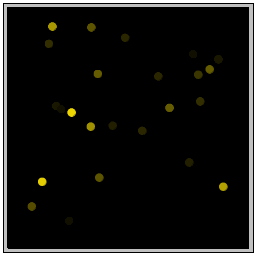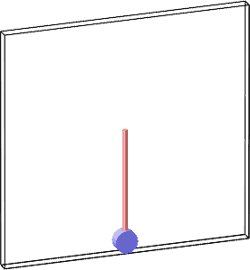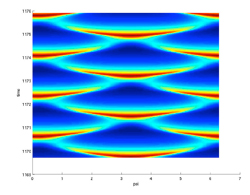Research / Research AreasComplex Systems
Interdisciplinary complex systems research targets a better understanding of phenomena. The phenomena range from gene regulatory processes in living cells, the dynamics of neural networks and brain function, human behavior, evolutionary processes, the spread of emergent infectious diseases, swarming animal populations, the structure and stability of ecosystems, social systems, sustainable energy production, economics, complex materials, and many more.
Although these phenomena appear to be very different at first glance, they all share a similar feature: they exhibit emergent properties and behavior by an intricate interplay of their components.
Jump to a Section
Bifurcation Theory
In nonlinear systems, the character of the solutions can change drastically when system parameters are changed; solutions can appear or disappear, the solutions can become oscillatory, or the dynamics can turn chaotic or turbulent. A classic, simple example is the buckling of a rod. If a straight rod or plate is compressed by a small load its length shrinks somewhat but it remains straight. However, if the load is increased beyond a critical value, the plate starts to buckle.
In such systems, it is of foremost importance to understand the qualitative nature of the different types of solutions and the transitions between them, before one can turn to quantitative details. The transitions between qualitatively different solutions typically occur via bifurcations. Strikingly, the essential features of many bifurcations can be extracted using analytical techniques. Symmetries often play an important role in bifurcations, since they can lead to competitive dynamics of related modes and substantially increase the number of solutions involved. Group theory provides tools to elucidate this additional complexity.
Faculty
Coupled Oscillators
 Examples of oscillators are all around us:
Examples of oscillators are all around us:
- Fireflies that blink at regular intervals
- Radio waves that permeate the air
- The daily tides
- The Earth itself as it swings periodically around the sun in its orbit
The study of coupled oscillators attempts to understand what happens when individual oscillatory parts are connected together to influence one another. There are a variety of typical behaviors: the oscillators can act as though uncoupled, they can all synchronize (in phase or frequency), or some portions can synchronize while others remain "incoherent." Amazingly, when coupling is changed, the behavior can change between these different states in much the same way as water changes from ice to liquid to vapor.
Faculty
Nonlinear Dynamics
 We study dynamics to better understand the way in which things change in time. For certain systems, even simple ones like a pendulum, we can easily understand the dynamics when deviations from an "equilibrium" position are small. When those deviations become large, however, quantitative understanding of what's happening can become a very challenging problem -- one at the forefront of modern research. This behavior far from equilibrium is usually "nonlinear," eluding traditional methods of mathematical analysis. Often in these systems, individual components may be easy to understand, but the whole cannot be understood as the sum of its parts.
We study dynamics to better understand the way in which things change in time. For certain systems, even simple ones like a pendulum, we can easily understand the dynamics when deviations from an "equilibrium" position are small. When those deviations become large, however, quantitative understanding of what's happening can become a very challenging problem -- one at the forefront of modern research. This behavior far from equilibrium is usually "nonlinear," eluding traditional methods of mathematical analysis. Often in these systems, individual components may be easy to understand, but the whole cannot be understood as the sum of its parts.
Faculty
- Daniel Abrams
- Alvin Bayliss
- Mahdav Mani
- Michael J. Miksis
- Hermann Riecke
- Petia Vlahovska
- Vladimir Volpert
Pattern Formation
In many physical systems there is a spontaneous, unforced, self-organization of the system into patterns. The patterns themselves can be either stationary or time dependent, in which case they often manifest themselves as waves propagating through some medium. Patterns occur in almost every scientific discipline.
 One example is in biology, where patterns can involve the formation of islands or colonies (for example, bacterial colonies) surrounded by dead zones where the species is essentially extinct. Other examples occur in combustion where patterns can involve a regular distortion of a flame front into cells of high and low temperature. A third example occurs in materials science, where patterns can result in an organized microstructure of the material which can significantly impact its macrostructural properties.
One example is in biology, where patterns can involve the formation of islands or colonies (for example, bacterial colonies) surrounded by dead zones where the species is essentially extinct. Other examples occur in combustion where patterns can involve a regular distortion of a flame front into cells of high and low temperature. A third example occurs in materials science, where patterns can result in an organized microstructure of the material which can significantly impact its macrostructural properties.
